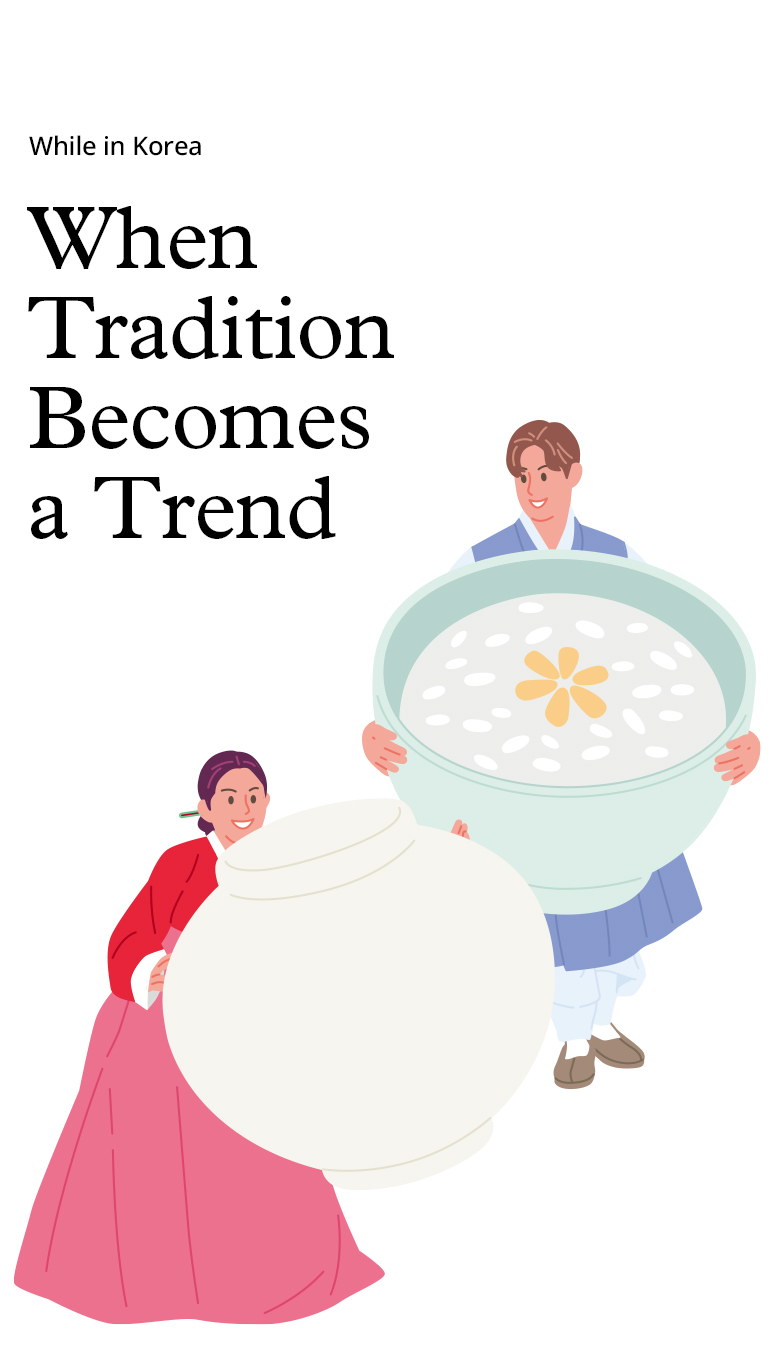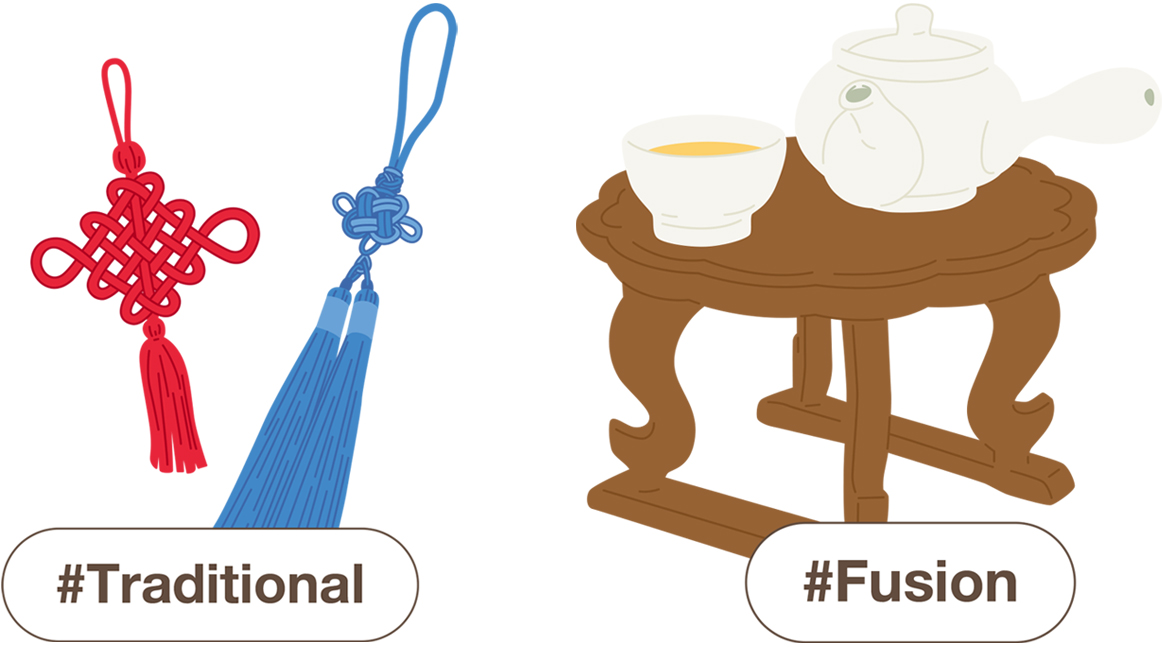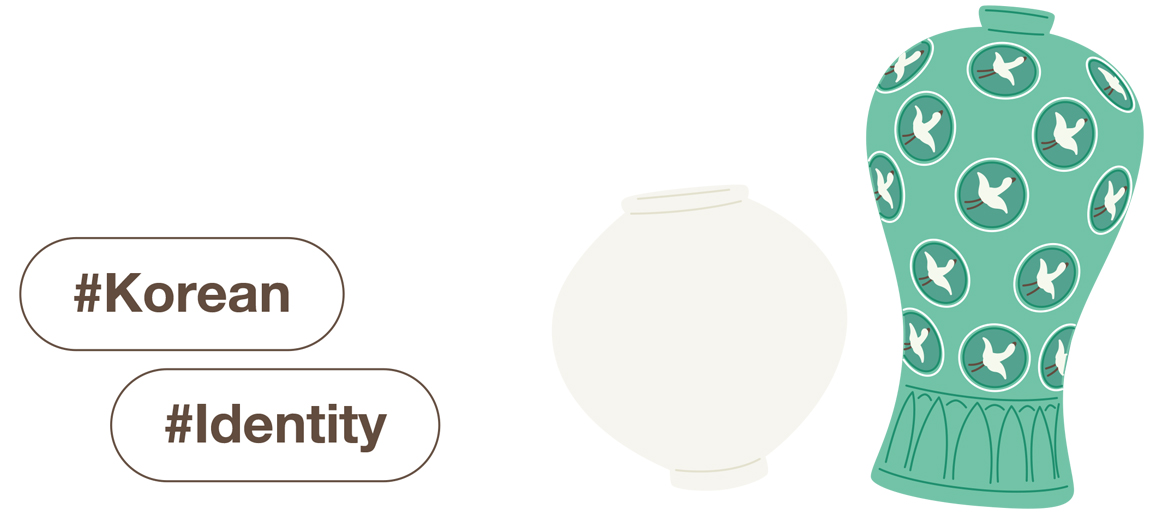
If you think of tradition as something that belongs entirely to the past—as something tedious that we grudgingly preserve—take a peek at what’s going down in Korea today. A new generation of people drawn to tradition is finding joy in reinterpreting and applying it across all areas of life. For them, Korea’s traditions aren’t relics of the past, they’re part of today’s cultural trend.
Writer. Sung Ji Yeon
Illustrator. RYUGOON
Over the past few years, tradition has been trending in Korea. People are visiting clusters of Hanok (traditional houses), trying on Hanbok (traditional attire), sampling traditional snacks and purchasing products modeled after historical artifacts. These trends have given rise to the phrase “hip tradition,” describing the tendency to view the traditional as cool. A classic example of how hip tradition has become routine in Korea today is tours of historical palaces. For a long time, Gyeongbokgung Palace and other palaces of the past were largely the reserve of foreign tourists, with most Koreans considering them outmoded. But more recently, Koreans have been drawn back to the palaces by their traditional appeal. Palaces have late-night hours at certain times of year and host festivals with various traditional and cultural offerings in the spring and fall. At some palaces, tickets for these programs sell out within minutes. People are gladly fending off online rivals to spend a holiday at a palace, where they can indulge in a twelve-course royal feast or nibble on traditional confections while admiring the palace grounds.
These palace tours have something in common with the tourists (and tourist-oriented businesses) congregating to areas with a high concentration of Hanok, like the city of Jeonju and the Ikseon-dong neighborhood of Seoul. Customers are eager to book a room at the new Hanok appearing in these areas. And when beauty brands and fashion brands choose to open a flagship store or popup store in a Hanok, the unique experience is a big draw for customers.
Tradition has also become fashionable in the area of (where else?) fashion. Casual Hanbok of the sort warn by K-pop artists and actors have recently become popular. There has been a flood of items accommodating the tastes of the younger generation: jackets in traditional Hanbok patterns and materials, earrings resembling a gat (traditional hat) and belts made of norigae tassels.
Something similar is happening in the area of food. In recent years, yakgwa (honey cookies) and other kinds of hangwa (traditional Korean confections) have become essential snacks for the younger generation. It’s standard to slog through preregistration to get a chance to buy yakgwa made by a master of the craft. Along with latte drinks topped with yakgwa, an array of desserts are made with traditional Korean ingredients such as mugwort, sesame seeds (both standard and black), injeolmi (bean-powder-coated rice cake) and rice.
This set of trends has also brought gugak (traditional Korean music) into the spotlight. Artists continue to experiment with the old-timey music through (for example) a changgeuk (traditional music opera) integrating modern dialogue and humor into the baebaengigut traditional style of theater, a concert with video game background music repurposed for gugak, and a TV show adapted from a webtoon about gugak. Consequently, more people are watching these performances, and fandoms are emerging around specific traditional dance groups.
The popularity of cosmetics containers inspired by Korean handicrafts such as the dal-hangari (moon jar) and the excitement over the release of home décor or phone chargers modeled on ancient artifacts also fall within the category of “hip tradition.”

This isn’t the first Korean trend to be oriented on the past. An earlier fascination with antiques was dubbed “newtro,” combining the concepts of “new” and “retro.” There was also the halmae-nnial (combining the Korean dialect word halmae, meaning “granny,” with “millennial”) trend, which described young people intrigued by hobbies and foods more commonly favored by the elderly. But unlike those bygone trends, hip tradition is all about Korea-centered tradition. This isn’t a matter of a decade-old skirt coming back into fashion, but Hanbok itself taking center stage.
In past years, tradition was something young Koreans tended to take for granted. That is to say, tradition wasn’t an active ingredient in creative endeavors; it wasn’t mainstream. But thanks to K-pop and Korean dramas, Korea has attracted the attention of people from around the world. That, in turn, has made young Koreans curious about what’s behind that attention. They’ve inquired what foreign viewers like about Korean things and how their various cultures are different from Korea’s. Such inquiries have gotten Koreans pondering the traditions that can be seen as uniquely Korean. As a result, there’s a growing sense that tradition is charming and delightful on its own terms.
What’s interesting about the current trend is that people aren’t mindlessly consuming tradition; rather, they’re manipulating and reinterpreting it and finding unique ways to combine it with other cultural elements. After all, media consumers won’t tolerate something they find boring, especially when you force it on them. For consumers, Koreans traditions are a fascinating facet of culture to be consumed as they please, just as they’ve consumed so many other kinds of culture irrespective of traditional boundaries.
However, these trends don’t mean that tradition is no longer being preserved in its authentic forms. The variations of tradition being created today can guide consumers to the authentic traditions that still need to be preserved. Those who gain an interest in Hanbok through the modern variations, for example, sometimes end up studying Korean history and tradition.
Hip tradition is making Korea’s cultural identity more distinct and stronger, hinting at the diverse ways Korean traditions will expand in the years to come. Considering how hip tradition has unlocked the hidden charm of these traditions, we hope this trend will have some staying power.
